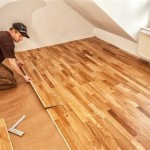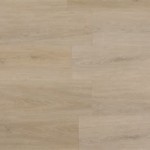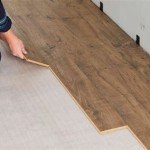Essential Considerations for Flexible Flooring on Uneven Floors
Installing flooring on uneven subfloors requires a careful selection of materials and techniques to ensure a successful outcome. Flexible flooring options provide a viable solution for these situations, but understanding their characteristics and installation requirements is crucial.
1. Substrate Preparation: Properly preparing the subfloor is essential for any flooring installation, and it's even more critical for uneven surfaces. Leveling compound or self-leveling concrete can be applied to fill in any dips or valleys, creating a smooth base for the flooring.
2. Material Selection: Sheet vinyl, luxury vinyl plank (LVP), and carpet tiles are suitable flexible flooring options for uneven floors. Sheet vinyl is the most forgiving, as it conforms well to irregularities. LVP and carpet tiles offer a more durable and stylish solution, but they require careful installation to avoid uneven seams.
3. Installation Techniques: Floating floor installations, where the flooring material is not attached directly to the subfloor, are recommended for uneven surfaces. The use of an underlayment beneath the flooring helps absorb irregularities and improve insulation.
4. Trimming and Fitting: Trimming and fitting flexible flooring around obstacles, such as walls or door frames, requires precision and care. Using a utility knife or jigsaw with a fine-toothed blade ensures clean cuts and accurate fit.
5. Adhesives and Seam Treatments: Adhesives are typically not required for floating installations, as the interlocking system holds the materials together. However, for sheet vinyl or perimeter edges, an adhesive may be necessary to secure the flooring.
6. Transitions and Moldings: Transitions between different flooring materials or areas with different floor levels are important considerations. Flexible flooring can be seamlessly transitioned with the use of transition strips or moldings, which help to conceal any unevenness.
7. Maintenance and Care: Flexible flooring is generally low-maintenance, but regular cleaning and inspection are essential. Use of appropriate cleaning solutions and protective mats can help maintain the flooring's appearance and prevent damage.
By understanding the essential considerations outlined above, you can select and install flexible flooring on uneven floors with confidence. The result will be a durable, aesthetically pleasing flooring solution that enhances the functionality and style of your space.

Lvp Lvt And Engineered Hardwood Floors For Uneven Surfaces

Flexible Flooring For Uneven Floors Top Lines

Cottage Q A Should I Use Vinyl Flooring In My Unheated Life

Flooring Installation Options For Uneven Floors Ub Hardwoods Blog

Floating Floors The Best Floor For Uneven Surfaces

Flexible Flooring For Uneven Floors Top Lines

Laminate Or Vinyl Plank What Works Better Over An Uneven Subfloor

Should We Be Concerned About Vinyl Plank Installed Over Uneven Floors

How To Fix Uneven Floors And Common Causes Teka Flooring

Flexible Flooring For Uneven Floors Top Lines
Related Posts








